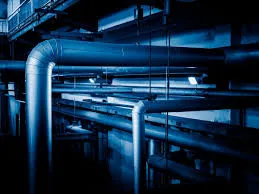Dec . 16, 2024 23:56 Back to list
ppr pipes products
Understanding PPR Pipes and Their Applications
In the realm of modern plumbing and construction, the choice of materials plays a crucial role in ensuring durability, functionality, and efficiency. One material that has gained significant attention in recent years is Polypropylene Random Copolymer (PPR) pipes. Known for their versatility and reliability, PPR pipes have become a popular choice for a myriad of applications, ranging from residential plumbing to industrial setups. This article delves into the features, advantages, and common applications of PPR pipes, offering insights into why they have become a preferred material in many industries.
What are PPR Pipes?
PPR pipes are made from a type of thermoplastic polymer known as polypropylene. This material is specifically designed for piping applications, providing excellent resistance to temperature variations and chemical exposure. PPR pipes are produced through a process called random copolymerization, resulting in a flexible and durable piping solution. The pipes are typically available in various diameters and can be joined through heat fusion, creating a seamless and leak-proof connection.
Advantages of PPR Pipes
1. Durability One of the standout properties of PPR pipes is their durability. They can withstand high pressures and temperatures, making them suitable for both hot and cold water systems. Unlike traditional metal pipes that may corrode over time, PPR pipes are resistant to scale formation, ensuring a longer lifespan.
2. Lightweight and Easy to Handle PPR pipes are significantly lighter than their metal counterparts, making them easier to transport, cut, and install. This reduces labor costs and time during installation processes.
3. Eco-Friendly Because they are made from non-toxic materials, PPR pipes are environmentally friendly. They do not leach harmful substances into the water, ensuring that the water remains safe for consumption. Furthermore, they can be recycled, contributing to reduced environmental impact.
4. Cost-Effectiveness Although the initial cost of PPR pipes may be comparable to other materials, their long-term benefits can result in significant savings. The reduced need for maintenance and repairs over the years makes them a cost-effective option for both residential and commercial installations.
ppr pipes products

5. Chemical Resistance PPR pipes exhibit excellent resistance to a variety of chemicals, making them suitable for transporting chemical fluids in industrial settings. This property prevents any potential reactions between the pipe material and the transported substances.
Common Applications of PPR Pipes
1. Plumbing Systems PPR pipes are widely used in plumbing systems for both cold and hot water supply. Their ability to withstand high temperatures makes them ideal for use in hot water systems in residential buildings, restaurants, and commercial establishments.
2. Heating Systems In addition to plumbing, PPR pipes are commonly used in heating systems such as underfloor heating. Their thermal insulation properties help maintain efficient temperature control.
3. Irrigation Systems Agriculture and gardening sectors benefit from PPR pipes for irrigation purposes. Their durability and resistance to UV rays ensure that they can handle the harsh environmental conditions often encountered in outdoor settings.
4. Industrial Applications Many industries utilize PPR pipes for the transport of corrosive liquids and gases. Their chemical resistance makes them an ideal choice for factories, plants, and laboratories where safety and reliability are paramount.
5. Firefighting Systems PPR pipes can also be employed in firefighting systems, effectively transporting water at high pressures while maintaining structural integrity.
Conclusion
In summary, PPR pipes offer a multitude of advantages that make them a dependable choice for a variety of applications. Their durability, lightweight characteristics, eco-friendliness, and chemical resistance have revolutionized the plumbing and construction industries. As technology continues to evolve, the use of PPR pipes is likely to expand further, paving the way for innovative solutions in both residential and industrial environments. If you are considering a piping solution for your next project, exploring the benefits of PPR pipes could lead you to a cost-effective and sustainable choice.
-
High-Quality PVC Borehole Pipes Durable & Versatile Pipe Solutions
NewsJul.08,2025
-
High-Quality PVC Perforated Pipes for Efficient Drainage Leading Manufacturers & Factories
NewsJul.08,2025
-
High-Quality PVC Borehole Pipes Durable Pipe Solutions by Leading Manufacturer
NewsJul.08,2025
-
High-Quality PVC Borehole Pipes Reliable PVC Pipe Manufacturer Solutions
NewsJul.07,2025
-
High-Quality UPVC Drain Pipes Durable HDPE & Drain Pipe Solutions
NewsJul.07,2025
-
High-Quality Conduit Pipes & HDPE Conduit Fittings Manufacturer Reliable Factory Supply
NewsJul.06,2025

